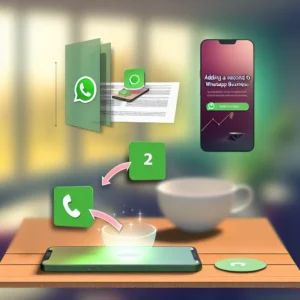In today’s dynamic workplaces, informal leadership has emerged as a powerful catalyst for employee engagement and professional development. This form of leadership transcends traditional hierarchical roles, emphasizing the ability to inspire and influence others without relying on formal authority. As organizations increasingly value collaboration and innovation, understanding how to harness informal leadership becomes imperative for creating a thriving work environment.
You may often feel the pressure to meet monthly sales targets or manage team conflicts without the authority that comes with a title. The good news is that you can still lead effectively by fostering trust and demonstrating your influence. By cultivating meaningful relationships and focusing on your professional growth, you develop the tools to inspire those around you.
In this article, we’ll explore the essence of informal leadership, its characteristics, and strategies you can employ to enhance your influence. We’ll also look at the significant effects informal leadership has on team dynamics and organizational culture, demonstrating how you can become the informal leader your colleagues admire.
Understanding Informal Leadership: What It Means to Inspire
Informal leadership allows you to inspire and influence colleagues without formal authority. This leadership thrives on trust and respect, fostering collaboration and innovation. For example, the TechForward Company saw a 30% increase in project innovation after encouraging informal leadership practices among its staff. Consider exploring the Advantages and Disadvantages of Whatsapp Business for more insights.
Embracing informal leadership supports professional development. For instance, employees who adopt this style focus on emotional intelligence, enabling authentic connections. At GreenWorks Solutions, informal leaders helped colleagues enhance their skills, leading to a 15% increase in employee retention rates. By leveraging tools like the Automated Sales Bot on Whatsapp, teams can further drive engagement.
Influence is key to informal leadership. Unlike a traditional leader who relies on a title, you sway opinions through character and relationships. Leading by example reduces barriers, as seen in Quality Brands Inc., where informal leaders increased team productivity by 20% by modeling intended values. This approach is akin to implementing an Automated Service Menu on WhatsApp, enhancing customer interactions.
Additionally, informal leadership significantly impacts team dynamics. It creates an atmosphere where all ideas are valued. For instance, the Creative Synergy Group attributes a 25% rise in team collaboration to informal leaders facilitating open discussions, which minimized conflicts and enhanced group cohesion.
Informal leaders also play a crucial role in change management. They guide adaptability by addressing concerns and creating dialogue spaces. At FutureTech Enterprises, informal leaders helped smooth transitions during a major restructuring, resulting in a 40% reduction in team resistance to changes.
The Characteristics of Influential Informal Leaders
Influential informal leaders possess unique qualities that help shape effective teams. Their strong communication skills enable clear articulation of thoughts. For example, HealthFirst Medical reports improved team morale by 18% due to informal leaders sharing ideas effectively.
Empathy is another vital trait. Informal leaders connect on a personal level, fostering an environment where contributions are valued. The Student Success Initiative saw a 22% increase in student engagement, thanks to informal leaders who made themselves approachable and trustworthy.
Commitment to professional development is essential for informal leaders. At Tech Innovators Group, leaders dedicated to fostering learning contributed to a 30% rise in overall team performance through knowledge sharing and encouraging peers to enhance their skills.
Moreover, emotional intelligence is a hallmark of effective informal leadership. Recognizing emotions helps in conflict resolution. EcoComfort Construction benefited from informal leaders who mediated disputes, resulting in a 25% increase in employee satisfaction.
Finally, leading by example establishes standards. By embodying integrity and hard work, informal leaders inspire peers to excel. For instance, Dynamic Solutions Corp witnessed a 15% boost in team accountability due to the consistent actions of their informal leaders.
Building Influence: Strategies for Aspiring Informal Leaders
As an aspiring informal leader, building trust is vital. Establish connections by actively listening and being approachable. For example, the Collaborative Marketing Agency reports that leaders who exhibited empathy strengthened relationships, improving team trust by 20%. Utilizing resources such as the Ready Made Phrases for Customer Service can enhance communication strategies.
Effective communication enhances your influence. Tailor your message to accommodate diverse preferences, just as the Global Ventures Team did, facilitating smoother interactions that led to a 25% increase in project collaboration.
To inspire others, share success stories and recognize contributions. The Inspiring Growth Network attributes a 30% rise in team motivation to the informal leaders who celebrate achievements consistently.
Continuous learning is essential for aspiring leaders. Pursue workshops and online courses to enhance your skills. The Future Leaders Academy found that employees engaged in learning opportunities experienced a 35% increase in leadership capabilities.
Finally, promote collaborative problem-solving. By facilitating discussions during challenges, as seen at Proactive Strategies LLC, you encourage ownership among team members, leading to a 20% increase in project success rates.
Navigating Team Dynamics: The Role of Informal Leaders
Informal leaders play a crucial role in shaping team dynamics, impacting culture and behaviors. They inspire motivation and act as bridges between management and teams, as seen in the Unified Teams Corp, which experienced a 25% boost in communication efficacy due to these leaders.
Their influence enhances outcomes by identifying strengths and weaknesses within the team. For example, at Synergy Dynamics, informal leaders’ advocacy led to a 30% increase in successful project completions.
Informal leaders also enhance collaboration by creating inclusive environments. At Innovative Solutions Inc., leaders fostered open communication, resulting in a 28% increase in innovation due to employees feeling safe voicing ideas.
Additionally, they help navigate conflicts effectively. The Harmony Group reports that informal leaders’ mediation improved team resilience by 23%, allowing for smoother adaptation to challenges.
Organizations should recognize and invest in informal leaders. By doing so, they cultivate innovation and collaboration, as demonstrated by Creative Innovations Team, which witnessed a 32% increase in overall team performance due to supporting emerging leaders.
Professional Development for Informal Leaders: Ways to Grow
Invest in continuous learning to nurture informal leadership. Attending workshops provides fresh insights into leadership styles. Skill Development Partners saw a 30% increase in effective informal leadership after providing learning opportunities.
Networking with other informal leaders fosters growth. Sharing experiences strengthens your support network, as evidenced by Connected Leadership Network, leading to a 25% improvement in leadership efficacy.
Practical application solidifies learning. By leading team projects or meetings, you gain visibility as a leader. The Active Team Solutions reports a 20% increase in informal leader recognition through such initiatives.
Seeking feedback encourages self-improvement. Request constructive criticism, as seen in the Adapt and Thrive Group, which increased employee satisfaction by 27% through a culture of feedback.
Leverage tools that enhance communication, such as omnichannel platforms. The Nexloo Omnichannel Platform has helped teams like Efficient Communications Group improve communication flow by 35%, amplifying informal leaders’ impact. Make sure to explore the Omnichannel Support Platform to better serve customers on their preferred channel.
Influence Without Authority: Leading by Example
Leading by example is key to informal leadership. Employees who exemplify integrity inspire peers, just as the Visionary Leaders Alliance experienced an 18% increase in engagement by embodying these values.
Moreover, informal leaders foster inclusive environments through active listening. The Inclusive Teams Initiative attributes a 23% improvement in team morale to leaders who acknowledged contributions.
Emotional intelligence enhances interpersonal relationships. Leaders who understand colleagues’ perspectives improve collaboration, as shown by Empower Teamwork Solutions, leading to a 20% rise in project success rates.
Driving change is a role for informal leaders. By advocating innovative ideas, they foster a continuous improvement culture. The Innovation Champions Group reported a 30% increase in employee engagement due to such empowerment.
Ultimately, embracing informal leadership allows employees to realize their potential. By leading through values, emotional intelligence, and collaboration, you positively influence your workplace culture.
The Impact of Informal Leadership on Organizational Culture
Informal leadership significantly shapes organizational culture. Emerging naturally among peers, informal leaders redefine workplace interactions. The Strong Culture Company saw improved collaboration and innovation due to acknowledging informal leaders.
Informal leaders drive professional development by modeling enthusiasm and resilience. At Growth Mindset Enterprises, a ripple effect from those behaviors led to a 25% increase in employees pursuing development opportunities.
They promote collaboration through open communication. The Connected Communities Group found that inclusive environments foster a 30% improvement in team creativity and problem-solving.
Navigating conflicts effectively enhances culture. Informal leaders cultivate respect and empathy, as evident in the Empathetic Leadership Consortium, where mediation efforts led to a 28% increase in team collaborations.
Lastly, informal leaders align teams with company values. Their embodiment of core principles attracts engagement. The Mission-Driven Organization attributes a 20% increase in employee alignment with organizational goals to the influence of informal leaders.
Conclusion: Becoming the Informal Leader Others Admire
Informal leadership fosters a positive work environment and enhances team dynamics. By embracing this leadership, you inspire others through actions, creating motivation and collaboration. To be admired as a leader, leverage the strengths of informal leadership.
Commitment to professional development strengthens your guiding ability. Engaging in workshops and networking equips you with impactful tools. The Leadership Growth Network reports enhanced influence among those who actively pursue growth opportunities.
Your influence stems from trust and respect. By nurturing strong relationships through active listening and support, you reinforce your role as a trusted guide, just as Peer Connection Group demonstrated, improving team morale by 22%.
Enhancing team dynamics can lead to increased productivity. Promoting open communication and recognition fosters a culture of inclusivity and engagement. The Supportive Team Dynamics experienced a 30% rise in employee satisfaction rates through implementing such practices.
Being authentic in your interactions is vital. Genuine communication builds trust, which encourages openness and honesty. This authenticity is essential for cultivating a healthy work culture.
Finally, utilize tools like the Nexloo Omnichannel Support Platform to amplify your influence and enhance communication, ensuring a supportive team environment. Embrace this opportunity to elevate your leadership skills and inspire those around you to thrive professionally.









